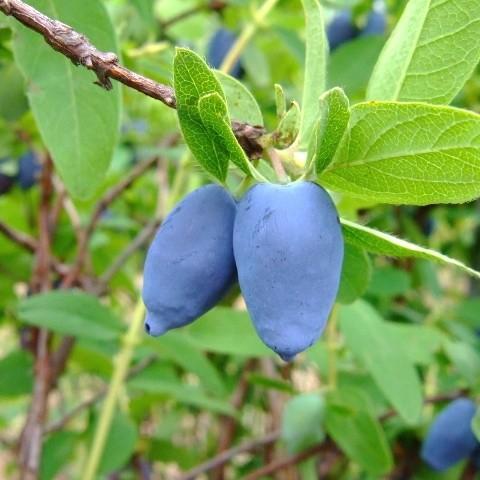
honeyberry
Lonicera caerulea 'Borealis'
Cycle:
Perennial
Watering:
Average
Hardiness Zone:
2 - 7
Flowers:
Flowers
Sun:
Full sun,part shade
Fruits:
Fruits Ready In Summer
Edible:
Yes
Leaf:
Yes
Growth Rate:
Low
Maintenance:
Low
Drought Tolerant:
Yes
Care Level:
Medium
watering
Honeyberry (Lonicera caerulea 'Borealis') needs 1 inch of water every week during its growing season. This is best accomplished through a combination of deep, infrequent soaker hoses, hand watering, and rain. During the early years of growth, ensure that the soil stays moist but not soggy by providing 3-4 gallons of water per plant every 7-10 days. During periods of extreme drought, water more frequently, but avoid over watering. Be sure to water at the base of the plant, avoiding the stems and leaves. It is best to water these plants in the morning to reduce the chance of foliage diseases.
sunlight
Honeyberry (Lonicera caerulea 'Borealis') needs full sun for at least 6-8 hours per day to grow and produce berries. During the summer months especially, plants should receive full sun throughout the day. Since honeyberry is a hardy shrub that tolerates cold weather, it can also survive in full sun during the winter months. However, if the temperatures drop below -30°C, a protective cover of plastic or burlap should be used to shield the bush from extreme weather conditions. Additionally, if the winter months are particularly dry and sunny, the honeyberry bush should be given some shade from direct sunlight.
pruning
Honeyberry (Lonicera caerulea 'Borealis') should be pruned annually to keep it in a controlled shape. Pruning should be done in early spring before buds start to swell. Remove any dead, broken, or diseased branches as well as any crossing branches and those that are growing inward. You can also remove some of the more vigorous upright leaders to encourage lateral branching. Prune the branches that are larger than 1/4 inch in diameter to a desirable size and shape. For heavily overgrown plants, prune a third to a half of the old growth each year over the course of 2 or 3 years.
